Terremoto! Terremoto! Everywhere, a terremoto! If you speak Spanish, you will know that this means ‘earthquake’. However, in the country of Chile, this also means something a little bit different. Around every corner restaurant, college street pub, or the awesome “Pio Nono” neighborhood, you will see this drink in the hands of those (many) daring enough to take on the challenge of enjoying just one glass. This amazing concoction of pineapple ice cream and a sweet fermented wine, called Pipeño, will literally leave you shaking at the knees and legs if you have too many. I admit, a couple of these made my trip to Santiago de Chile a little bit more enjoyable. However, it was not completely necessary, as this city is bustling and impressive in its own right.
 It is hard to not be impressed at what this city has accomplished, especially with a fairly recent dictatorship holding an iron fist just a generation ago. A thoroughly modern infrastructure, beautiful neo-classical architecture, amazingly friendly people, and arguably the strongest economy of any South American city, make this financial and cultural hub great for a visit. In addition, this is all set to the beauty of the Andes Mountains overlooking from the East. Generating 45% of the country’s GDP, the city never sleeps. In regards to the exotic nature in which I was expecting from my own preconceived notions, Santiago did not live up to my expectations. In contrast to the previous Latin American cities in which I had experienced in the previous months, Santiago felt more American in the way it was very uniform, clean, modern, and the people extremely busy and moving. However, for the time, it was a nice sense of comfort as it felt similar to Chicago, in this regard. I again felt the liveliness of a metropolis, which Santiago is most definitely. At 6.3 million people, Santiago is a BIG city.
It is hard to not be impressed at what this city has accomplished, especially with a fairly recent dictatorship holding an iron fist just a generation ago. A thoroughly modern infrastructure, beautiful neo-classical architecture, amazingly friendly people, and arguably the strongest economy of any South American city, make this financial and cultural hub great for a visit. In addition, this is all set to the beauty of the Andes Mountains overlooking from the East. Generating 45% of the country’s GDP, the city never sleeps. In regards to the exotic nature in which I was expecting from my own preconceived notions, Santiago did not live up to my expectations. In contrast to the previous Latin American cities in which I had experienced in the previous months, Santiago felt more American in the way it was very uniform, clean, modern, and the people extremely busy and moving. However, for the time, it was a nice sense of comfort as it felt similar to Chicago, in this regard. I again felt the liveliness of a metropolis, which Santiago is most definitely. At 6.3 million people, Santiago is a BIG city.
I entered Santiago de Chile via a bus from Mendoza, Argentina. This was a beautiful ride, and I would recommend anyone who can handle 7 hours on a bus to take the journey. The $35 ride allowed me to experience the beauty of the desert of western Argentina, as well as the snow-capped mountains that divide the two countries. The scenery was amazing, and makes for a perfect entrance into Santiago. As well, it is a hell of a lot cheaper than flying. I booked my ticket through Andesmar Bus Company. Try to book your ticket (you will need your passport number) in advance so you have a better chance of getting a seat on the upper deck & front sides of the bus. This will allow for the best views on the trip. You do not want to miss the adrenaline-packed (almost nightmare inducing) roads that wind up and around the mountain sides. Seriously, it’s pretty scary. Multiple times, it felt as if the bus were going to slide off and roll down the mountain, bringing us all to our ultimate doom.

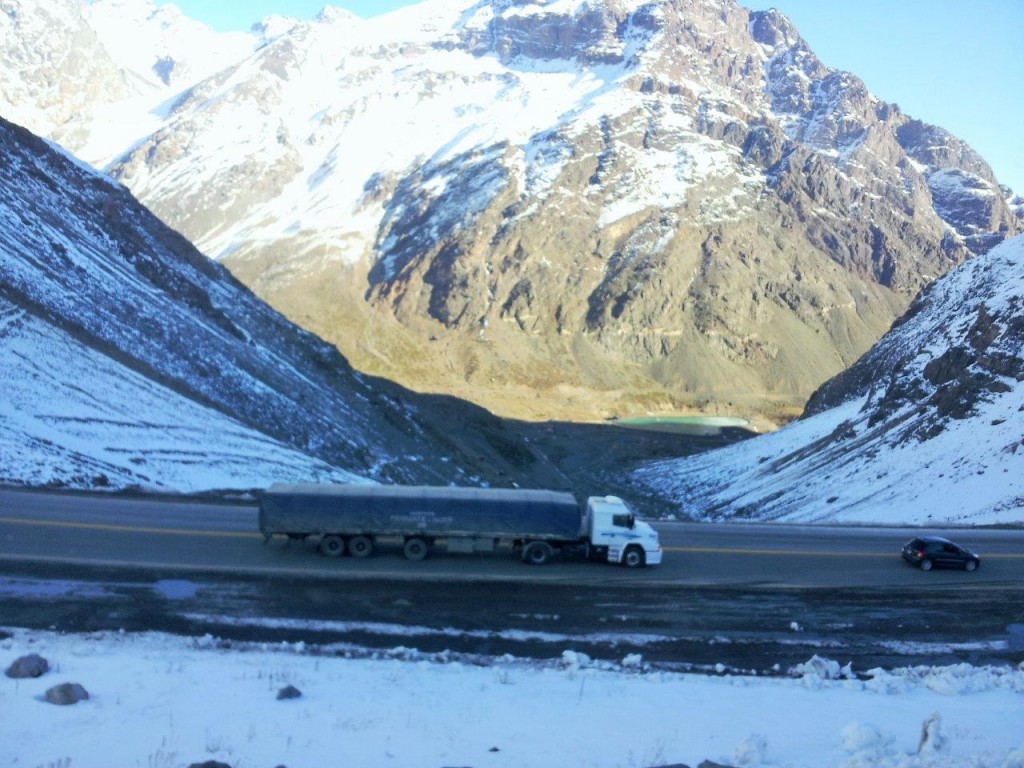
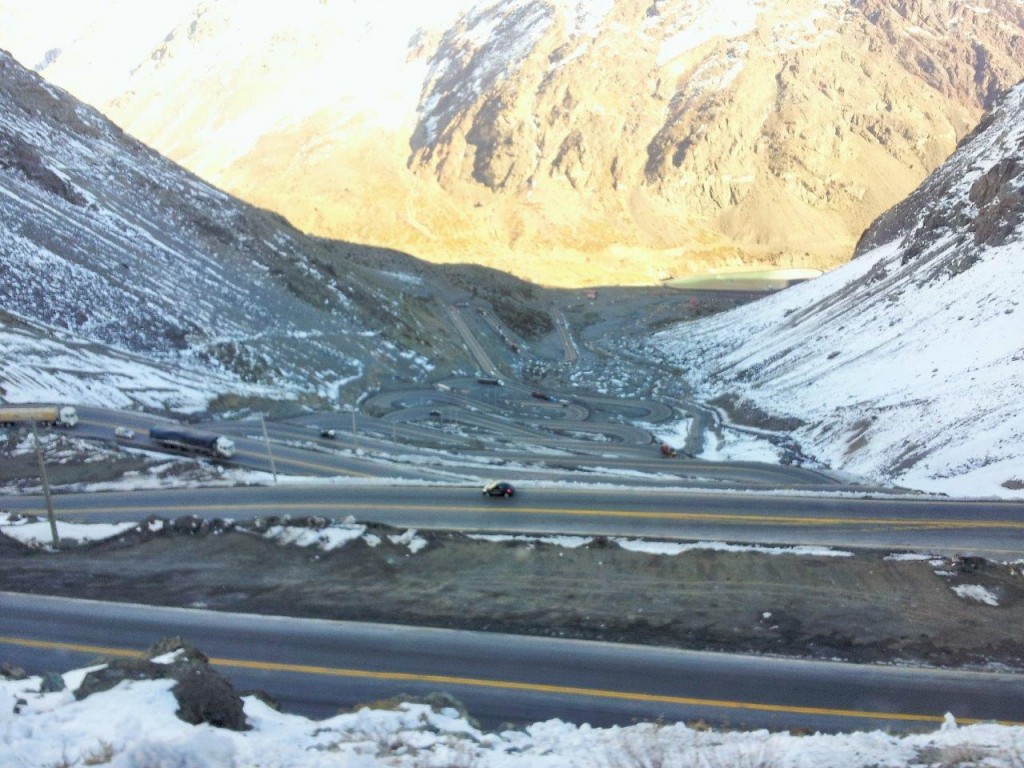
Upon arriving the central station, I immediately felt an infusion of South America meets North America. The city has the expected architectural similarities of other Latin American cities, as well as the Art Deco and classical style buildings so prominent in big American cities. Immediately, I once again felt the hustle and bustle of city life. Taxis, pedestrians, street peddlers, businessmen, and school kids could be seen in every direction. I tried hard not to look like a tourist, but couldn’t help swaying my head back and forth to see everything possible on my way over to my hostel. The metro system is fairly easy to get a handle on, and makes the trips across the city worthwhile. A single ticket will cost you about $1.25 and there are usually workers inside available to help guide you in the right direction.
I eventually made my way over to the hostel, “The Green House”. For only $20 a night, I was able to book a whole week in a private room. The hostel was in a great location, close to the Santa Lucia Metro stop. The stay included a small breakfast every morning, clean facilities throughout, and a very hospitable owner who took time out for every guest’s questions.
After exploring the city for a week, I found several main attractions that must not be missed. But before continuing further, I must recommend an awesome “free” walking tour that is put on by a company called Spicy Chile. This tour is put on twice per day from Monday-Saturday at specific meeting locations (see the website), and the only charge is for tipping the guide. It’s a great personal way to get in touch with the city and ask whatever questions you may have to a knowledgeable person.
- Parque Metropolitano (The Metropolitan Park)
As I am obsessed with amazing views, I made it a point to get to the top peak of this park on the first day that I ventured around. Located in the middle of the city, this urban park is one of the world’s largest, covering more than 1,780 acres. Standing atop the hill (named San Cristobal) is a statue of the Virgin Mary, overlooking the entire city. There is also a chapel, in which a special Mass was being celebrated. (My mother was happy when I showed her photos of me in attendance.) The park also consists of a botanical garden, a zoo, and two swimming pools. As I love to be on foot, I spent a large majority of the day checking out all of the scenery by walking and hiking up the hill. There are several ways to get to the top; A 40-minute hike, a 20-minute cable car ride starting in Pedro de Valdivia Norte (although it is currently under repair), and a Funicular with two stops to the zoo and then the summit (about $3 roundtrip).

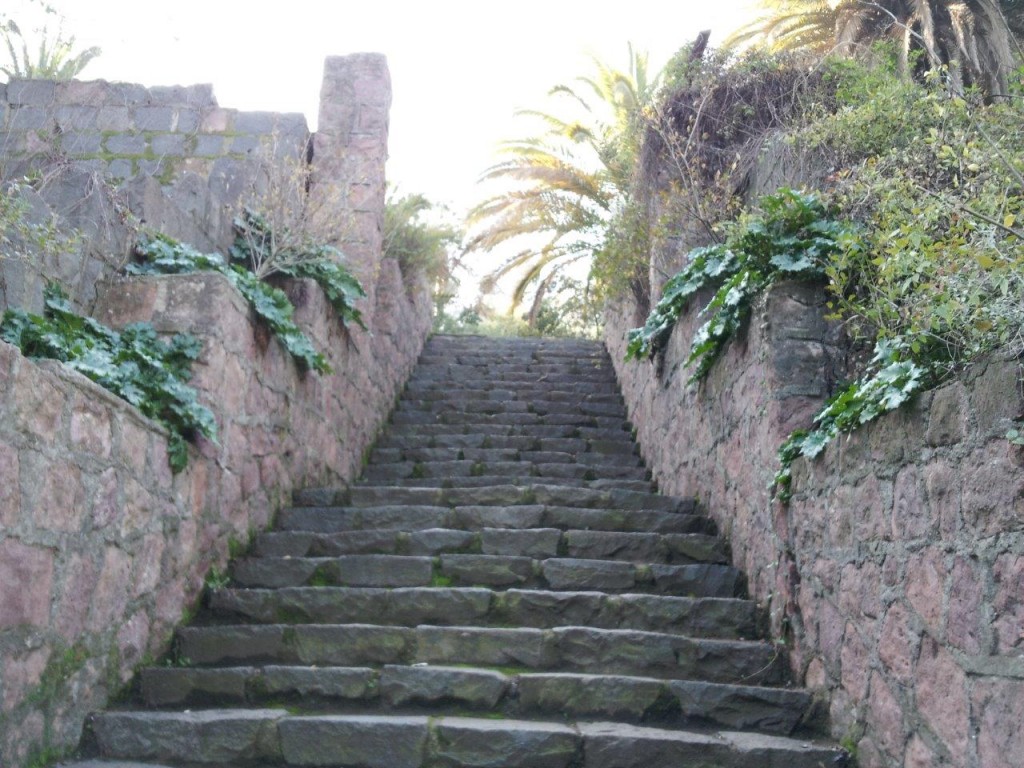
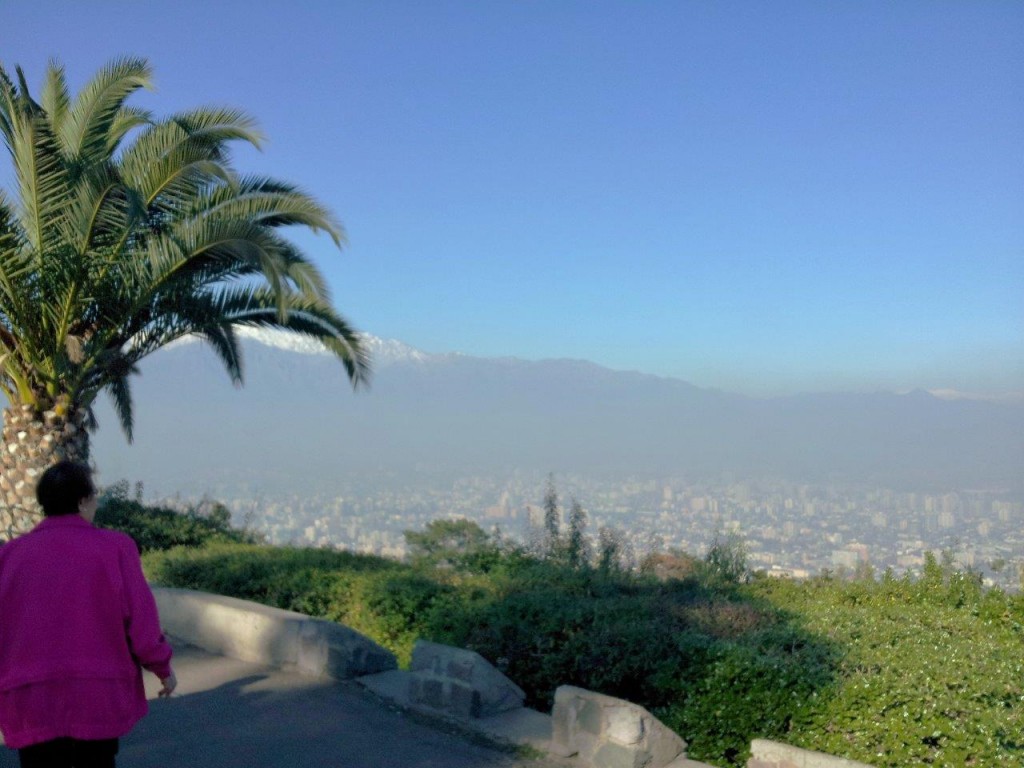



- Plaza de Armas
This central plaza is at the heart of the city. Enjoy an afternoon walking around the neighborhood and experiencing the buildings, architecture, Central Market, and do some people watching. The neighborhood has seen a surge in tasty Peruvian restaurants, as a lot of Peruvians come to the area to look for work. Be sure to check out the national cathedral.
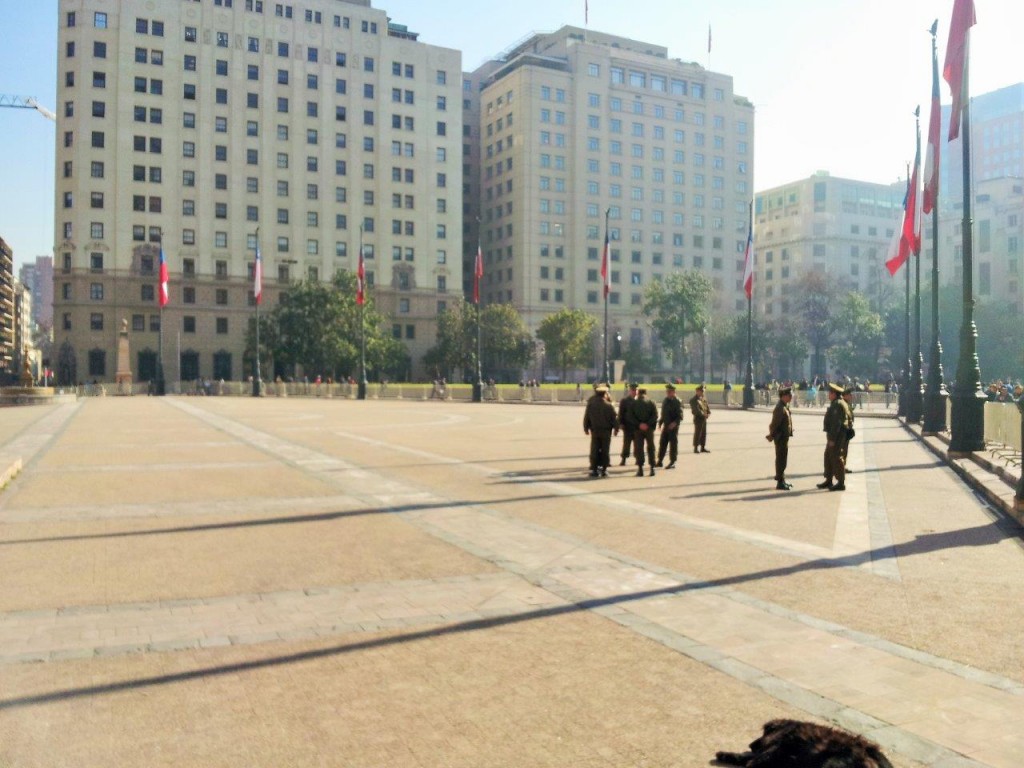
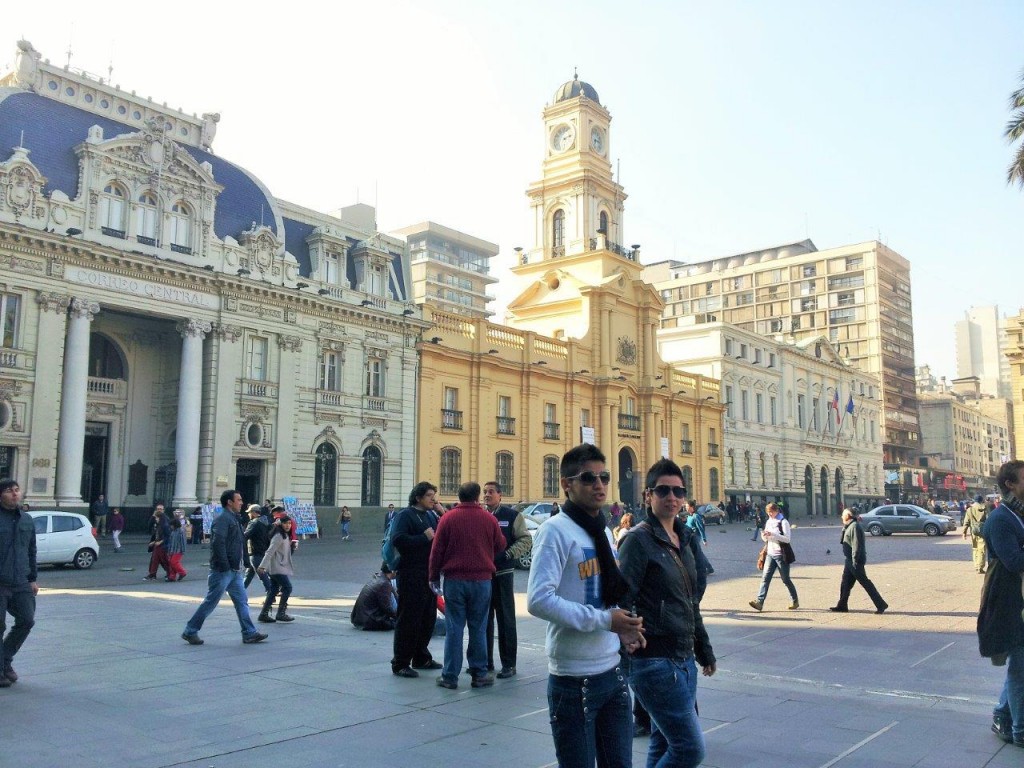




- Cerro Santa Lucia (Saint Lucia Hill)
This park makes for a nice morning or afternoon walk. Setup on a 15 million year old volcano, the stroll passes along fountains and old steps leading to the top of an early 19th century fort. Spend some time checking out the views at the top, overlooking the city skyline.






- Iglesia y Museo de San Francisco (Church and Museum of San Francisco)
At over 4 centuries old, this is the oldest church in Chile. No photos are allowed inside, so you’ll just have to remember how pretty the interior looks (although I snuck one without the flash). The garden, the architecture, the convent, and the 17th century art collection, are all pleasant and worth the visit.


- Pio Nono
I found that the most lively and charismatic environment for going out, either for a night on the town or just for an afternoon meal, was the “Pio Nono” neighborhood. This barrio has the largest concentration of bars in Chile. I suggest walking up and down the street and perusing inside the doors to find a bar that suits your tastes. It’s really nice to find a spot on the patio, enjoy a terremoto or pisco, and people watch. There are a lot of locals, as well as tourists, walking up and down the street at all times of the day.
As well, the Bellavista neighborhood is another good option for some quality nightlife. As I have experienced my fair share of jazz clubs in Chicago, I was not particularly interested in checking out the amazing jazz scene in Santiago. However, this is something you should consider, and definitely experience, if you are interested in jazz.
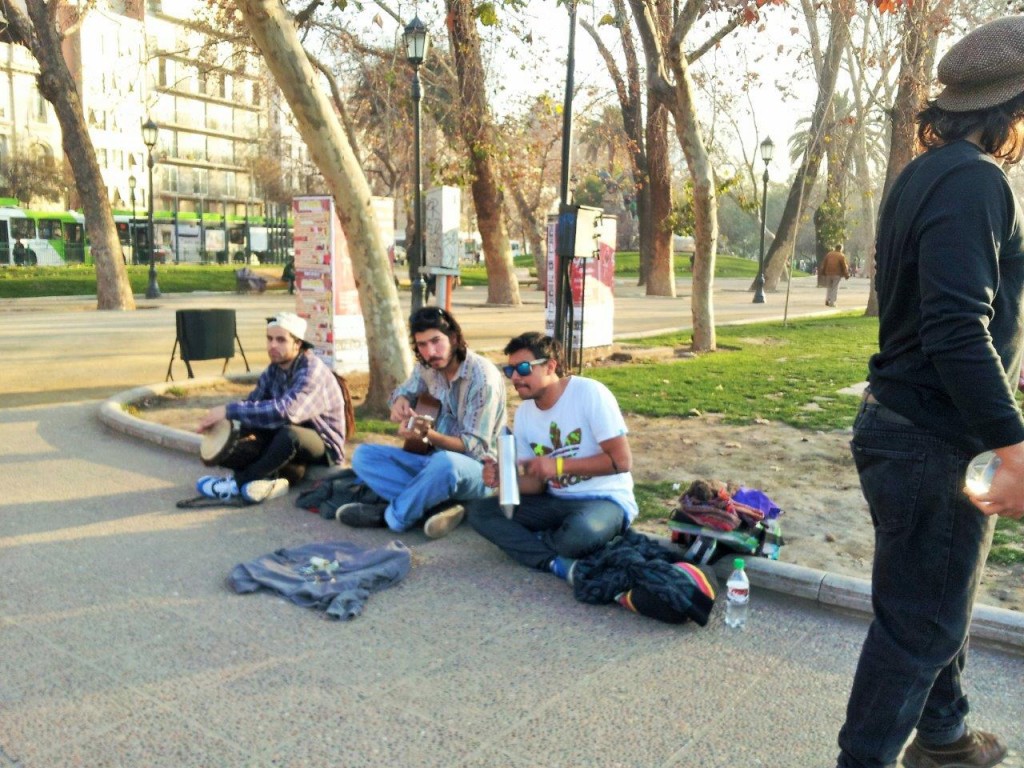
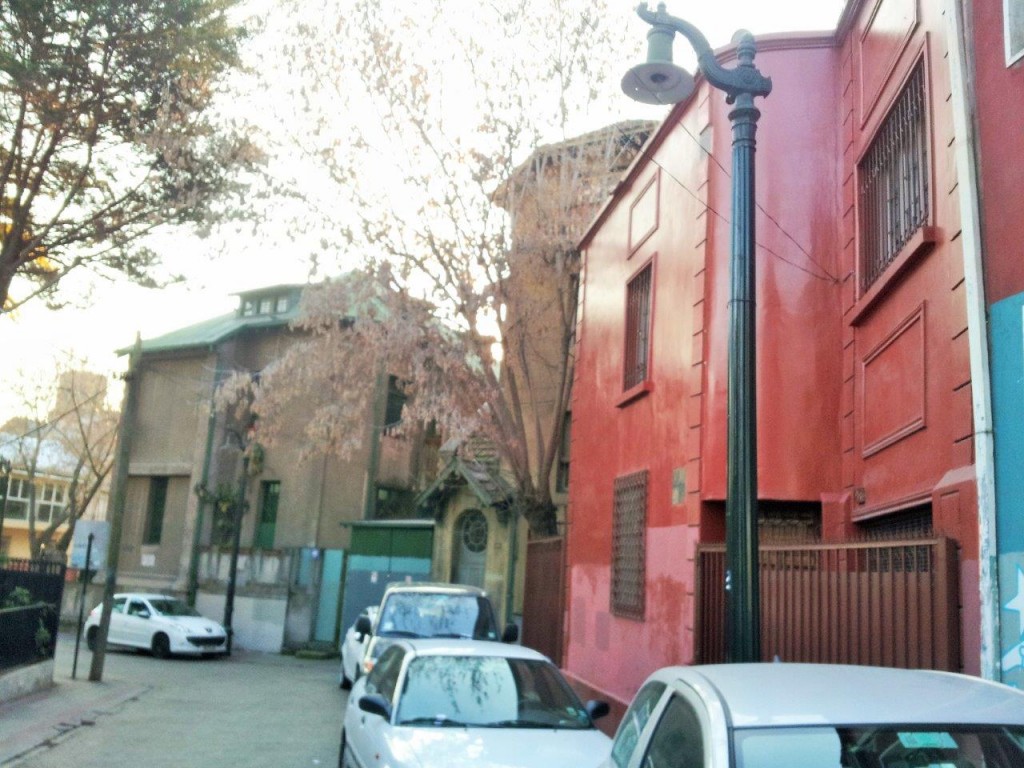

Outside of the smog which encompasses much of the area during the winter months, Santiago de Chile is a beautiful and impressive city. With a growing art and bohemian scene, a sound financial center, a booming café culture, numerous parks, the Andes next door, and a great restaurant scene, this historic metropolis continues to provide endless entertainment, excitement, and stability in a somewhat volatile region. On that note, enjoy another terremoto.












That was a seriously precarious mountain road … and the heritage in Santiago and other South American cities puts the amount of historic buildings back in North America to shame…!
They certainly seem to have a little longer history, perhaps even more deeply rooted. It is a very nice change from the norm, at least on our parts in America. Good to see you enjoyed it!